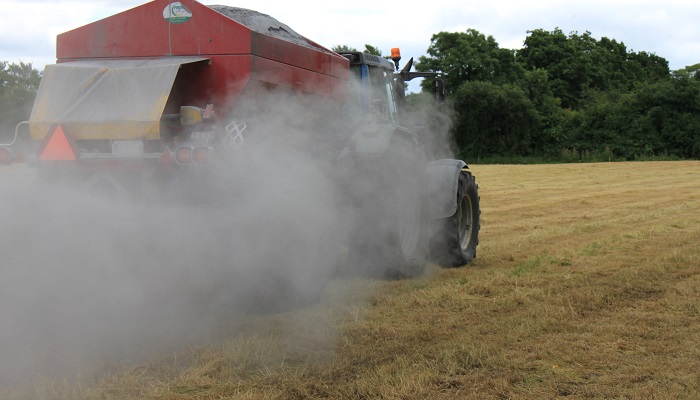15 June 2024
The many benefits of applying lime

With the deadline for spreading lime under the National Liming Programme extended out to 31 October 2024, John Enda Flannelly, ACRES Advisor, Teagasc Claremorris, looks at the many benefits applying lime on your farm can bring.
There is a number of benefits to spreading lime:
- It can release up to 70kg of soil nitrogen (N)/ha/year. As a result, it reduces the need for chemical nitrogen in the ground.
- Liming will increase the soil’s pH, which can lead to an extra 10-15% grass growth.
- The economic value of spreading lime is high. For every €1 you spend on lime on a drystock farm, you get back €5. For every €1 you spend on lime on a dairy farm, you get back €7.
- Due to the amount of nitrogen lime releases, it therefore reduces the amount of greenhouse gases produced which is a benefit for the environment.
How, when and where
When preparing to spread lime, you should prepare a farm liming plan. This will help you determine in which fields lime is required and how much lime is needed in each field. The first step that should be taken in this plan is to take soil samples on the farm (one every 4 or 5ha). This will identify where lime is needed, and when and at what rate it should be applied.
You should not put out more than 7.5t/ha (3t/ac) in any single application. Where there is a recommendation of greater than 7.5t/ha, spread 50% of the lime now and the other 50% in two years’ time. Lime should only be applied based on recent soil reports. These samples should be taken every four or five years. Lime can be spread all year round when weather conditions are suitable.
Lime, slurry and chemical nitrogen
- When spreading lime in a silage field, leave sufficient time between applying lime and closing for grass silage. If the lime is transported to the silage clamp or picked up in the baled silage, it can affect good preservation conditions for the silage.
- When spreading cattle slurry on fields that have received lime recently, it can result in a loss of up to 50% of the available slurry nitrogen. So apply cattle slurry first and then apply the lime 7 to 10 days later to reduce the amount of nitrogen lost.
- For urea, it is similar to cattle slurry where increased nitrogen loss may occur where straight urea fertiliser is applied on recently limed land. Similar to slurry application, apply the urea first and then apply the lime 7 to 10 days later to reduce the amount of nitrogen lost. However, where protected urea is being applied, early trial work indicates that it is safe to apply protected urea to fields that have been limed recently.
- If lime is already spread, allow three months between the application of lime and the application of urea and slurry.
Also read: Further extension to liming programme announced
